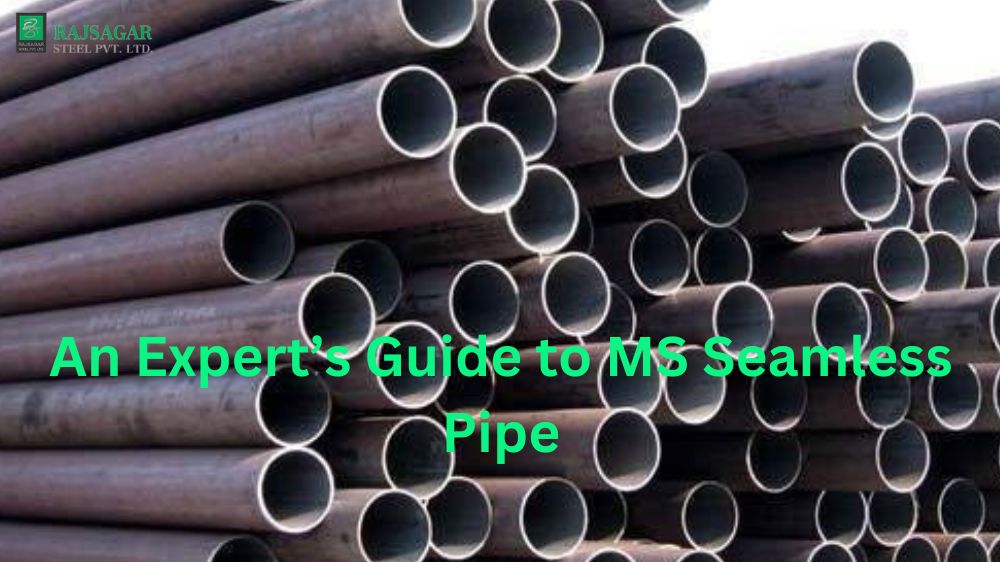This process ensures that the pipe is uniformly thick and free from defects. MS Seamless Pipe is highly preferred in oil and gas, construction, power generation, and automotive industries because of its strength and durability. However, getting the right seamless pipe for your project can be confusing. That’s why we’ve put together this expert guide to help you choose the right MS seamless pipe for your application.
What is MS Seamless Pipe?
MS Seamless Pipe is a type of pipe which is manufactured by drawing a solid steel billet through a piercing rod. The seamless pipe manufacturing process involves the forging, hot rolling and cold drawing processes. With these processes, it’s possible to produce pipes with tight tolerances and a good surface finish. This makes them ideal for high-pressure applications such as automotive exhaust systems, power plants, petrochemicals and oil refineries. Seamless pipes can also better withstand extreme temperatures and pressures due to their lack of seams or welded joints. They tend to be less susceptible to corrosion since they don’t have any weak spots where rust or other contaminants can accumulate. Overall, seamless pipes offer superior performance compared to conventional pipes made from welding methods. Hence, they are popularly used in critical industrial operations requiring precise control over dimensions and resulting in quality.
Types of MS Seamless Pipe
There are three types of MS seamless pipe – Hot Finished Seamless Pipe (HFS), Cold Drawn Seamless Pipe (CDS), and Cold Drawn and Stress Relieved Seamless Pipe (CDW). The hot-finished seamless pipe is produced at higher temperatures and undergoes minimal processing, while the cold-drawn seamless pipe is produced at lower temperatures and undergoes more processing. The CDW seamless pipe is processed to release stress within the material. Depending on your project requirement, you must choose the right type of MS seamless pipe.
Hot Finished Seamless Pipe
Hot Finished Seamless (HFS) Pipe is formed by drawing hot metal over a die. It has no seams or joints, which makes it stronger and more reliable than traditional welded pipes. The inside diameter of Hot Finished Seamless Pipes can range from 24″ to 40″, with wall thickness ranging from 0.25″ to 1.5″. These pipes are perfect for applications requiring precise geometry and strong working pressure, like oil & gas pipelines, power plant equipment and boilers, and other industrial applications such as shipbuilding, valves/valve components, compressors and construction structures. HFS Pipes are also known for their great corrosion resistance in cold and hot climates due to advanced coating techniques such as epoxy paint or galvanizing processes. An additional benefit is their superior sound-deadening qualities which make them ideal for noise-sensitive areas such as chemical plants or residential neighbourhoods near factories or power plants etc., where high noise levels are a common issue today.
Cold Drawn Seamless
Cold Drawn Seamless (CDS) Pipe is made by cold drawing or forming steel into a shape that is then cut to size. It can be used for various industrial applications, such as making hydraulic lines and other components. The pipes are generally made from low-carbon steel, making them more cost-effective yet still strong and long-lasting. Since CDS pipes have greater surface area per unit mass than regular pipes, so they require less energy to transport them over long distances due to reduced friction losses compared with other piping systems. CDS pipe also has higher tensile strength than hot-rolled seamless (HRS) pipes, allowing for increased pressure ratings. Finally, CDS pipes are more corrosion-resistant than HRS pipe since it does not contain oxide scale at their surface – an issue seen in many forms of steel processing.
Material Grades
MS Seamless Pipe is made from different grades of steel, each with its own unique properties. Some of the common grades of MS seamless pipe are – ASTM A106 Grade B, ASTM A333 Grade 6, and API 5L Grade B. These grades differ in terms of their tensile strength, yield strength, and chemical composition. It’s important to choose the right material grade that is suitable for your project’s conditions.
Pipe Dimensions
MS Seamless Pipe comes in different dimensions: diameter, wall thickness, and length. It’s important to accurately determine the dimensions required for your project to avoid any mishaps during installation. You also need to consider the fact that customization could be required if standard pipe sizes don’t meet your needs.
Corrosion Resistance
Corrosion is one of the main concerns when it comes to using MS Seamless Pipe in different industries. MS seamless pipe is prone to corrosion because of its iron content. Therefore, special coatings such as epoxy, zinc, or fusion-bonded epoxy are added to enhance its resistance to different types of corrosion. Depending on your project’s environment, you will need to choose the right coating for your MS seamless pipe.
Pricing
Pricing of MS Seamless Pipe varies based on the type, material grade, dimensions, and coating. Always ensure you are getting competitive pricing from vendors with a proven track record of providing quality seamless pipes to customers. Warning, going lower than a certain price can result in reduced durability and decreased performance of pipes, which will have cost implications further down the line.
Conclusion
In conclusion, MS Seamless Pipe is an excellent option for industries that require high strength, durability and resistance to high temperatures. To ensure that you choose the right seamless pipe according to the project requirement, consider the type of MS seamless pipe, steel material grades, pipe dimensions, corrosion resistance, and pricing. Now that you’ve learned the expert’s guide to choosing MS Seamless Pipe, you’re ready to make an informed decision for your next project.

